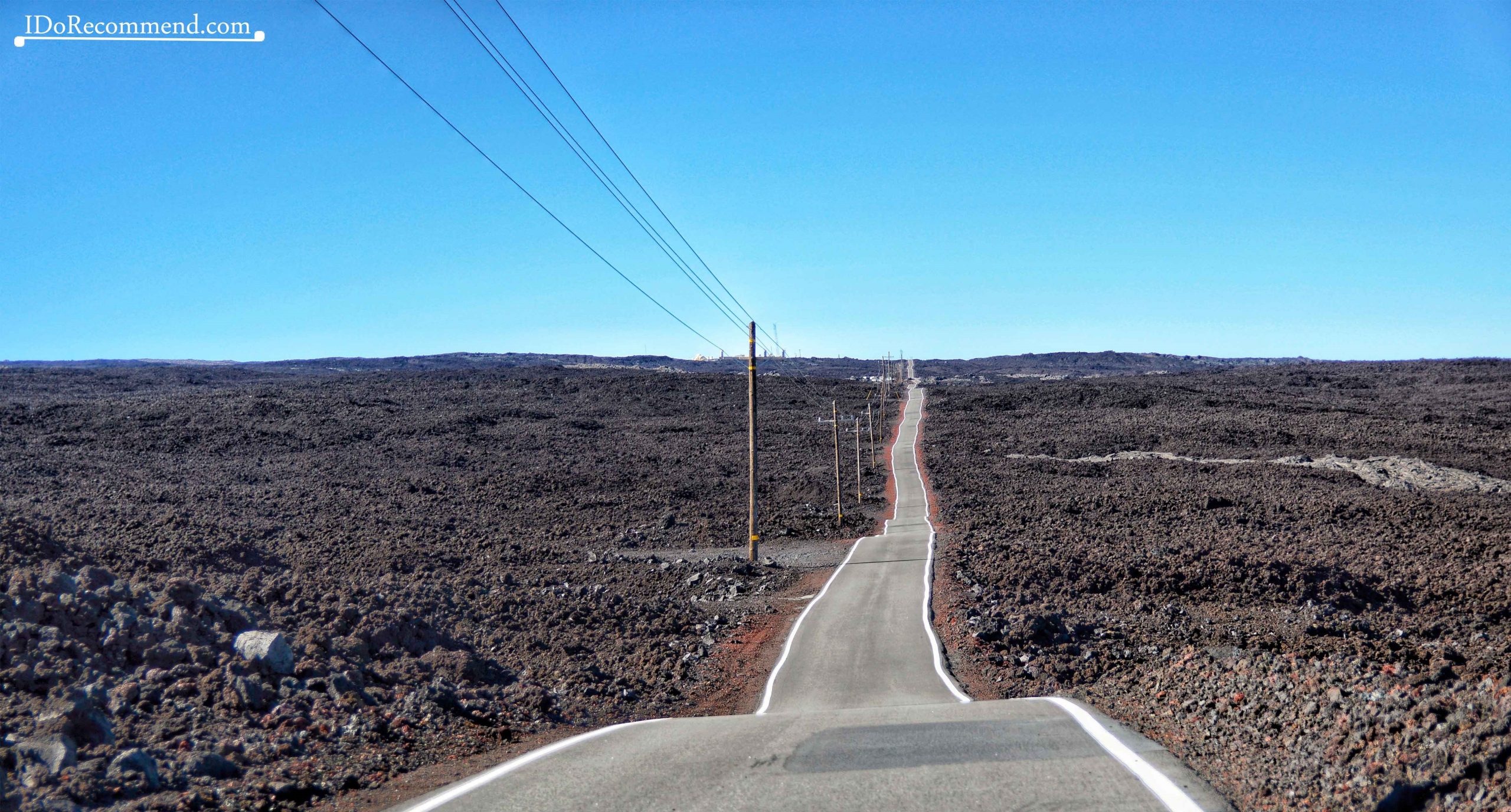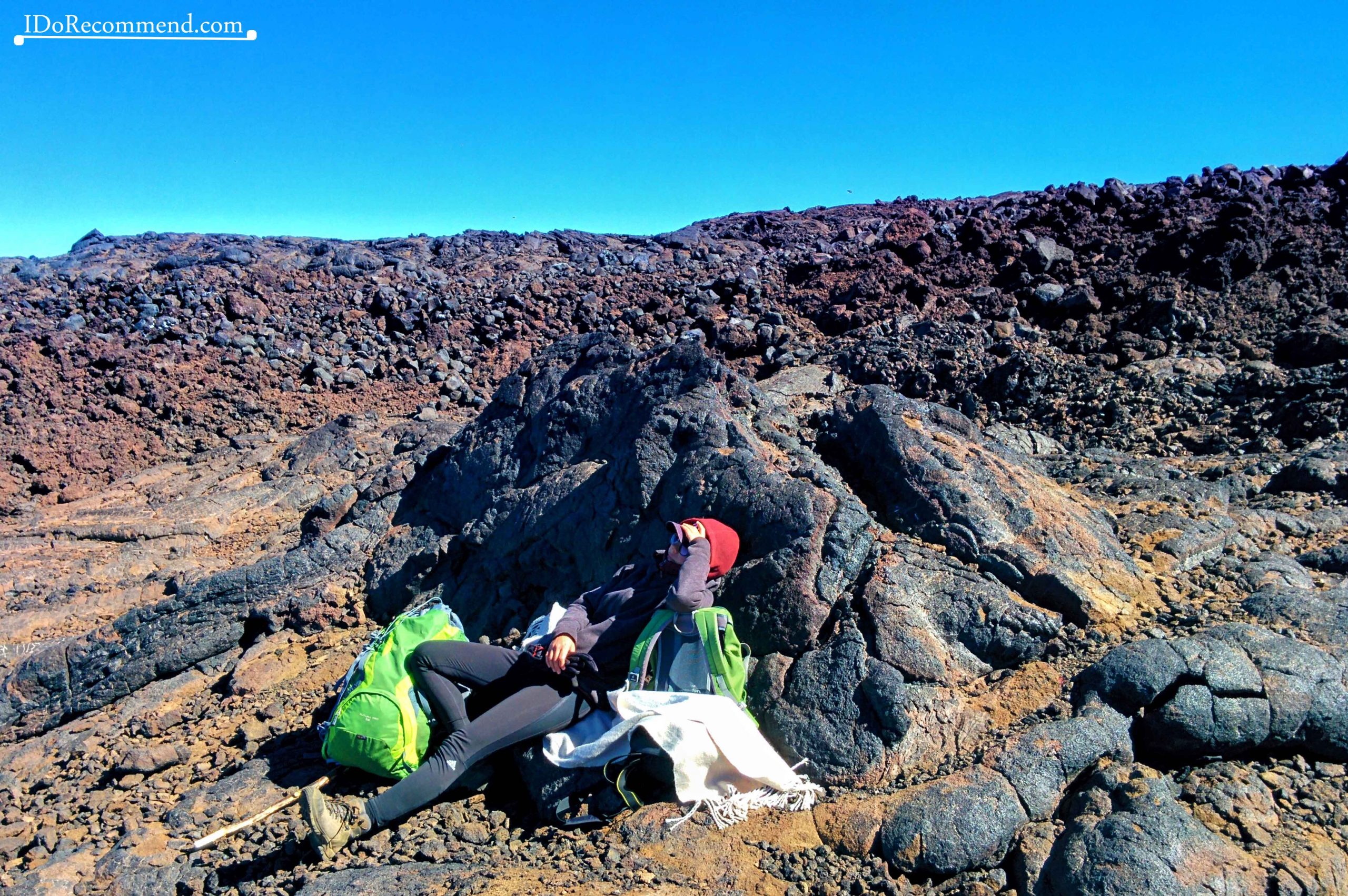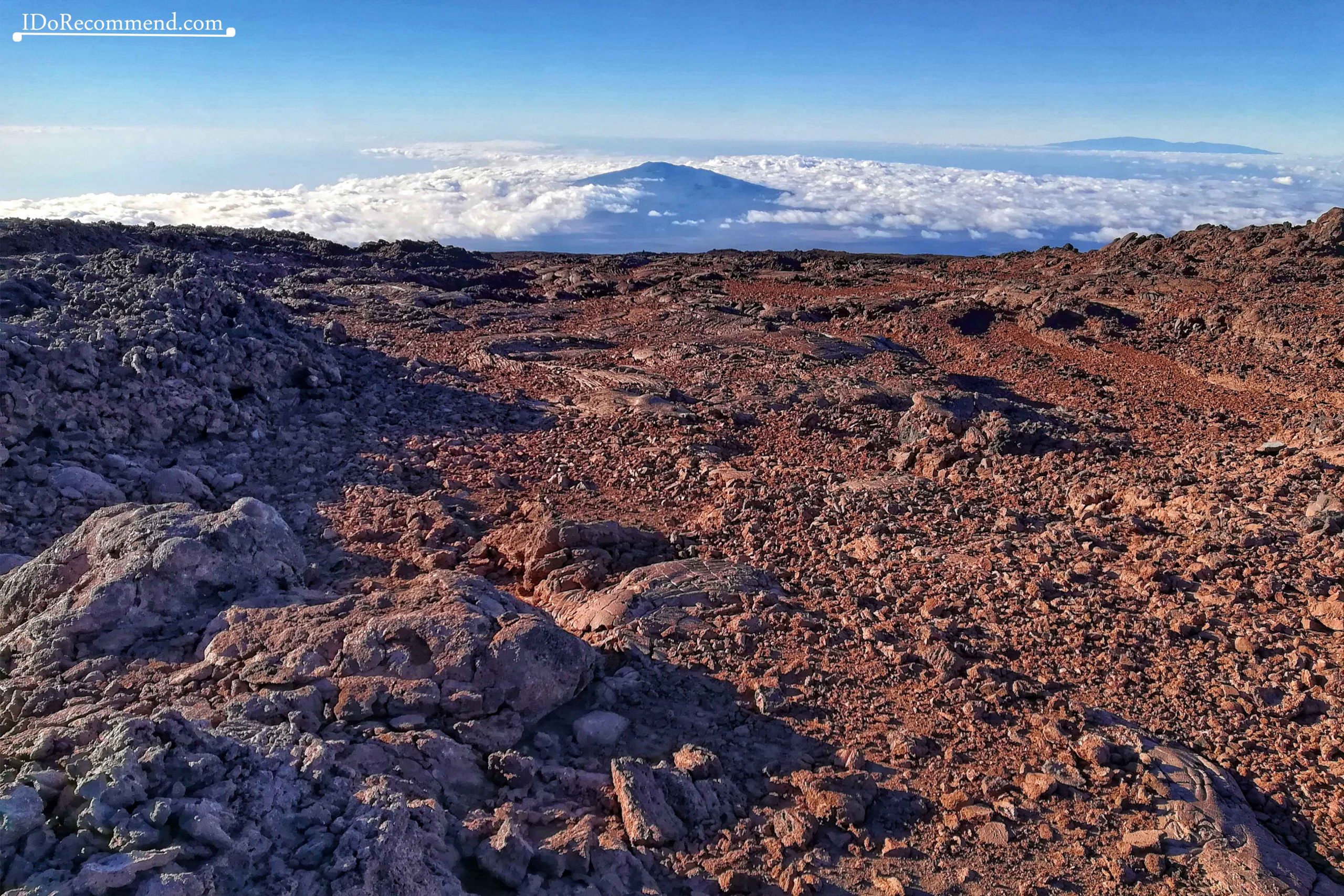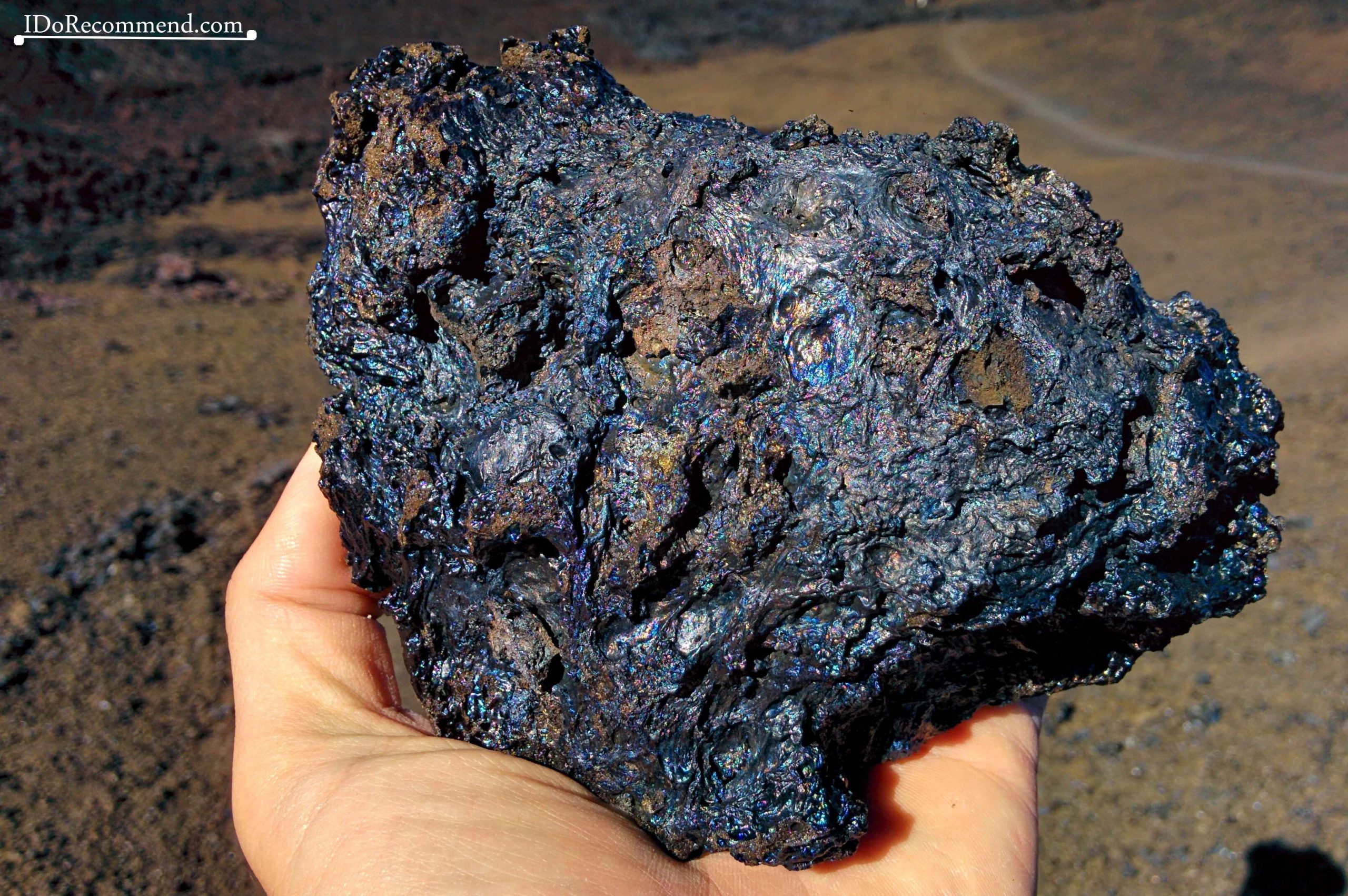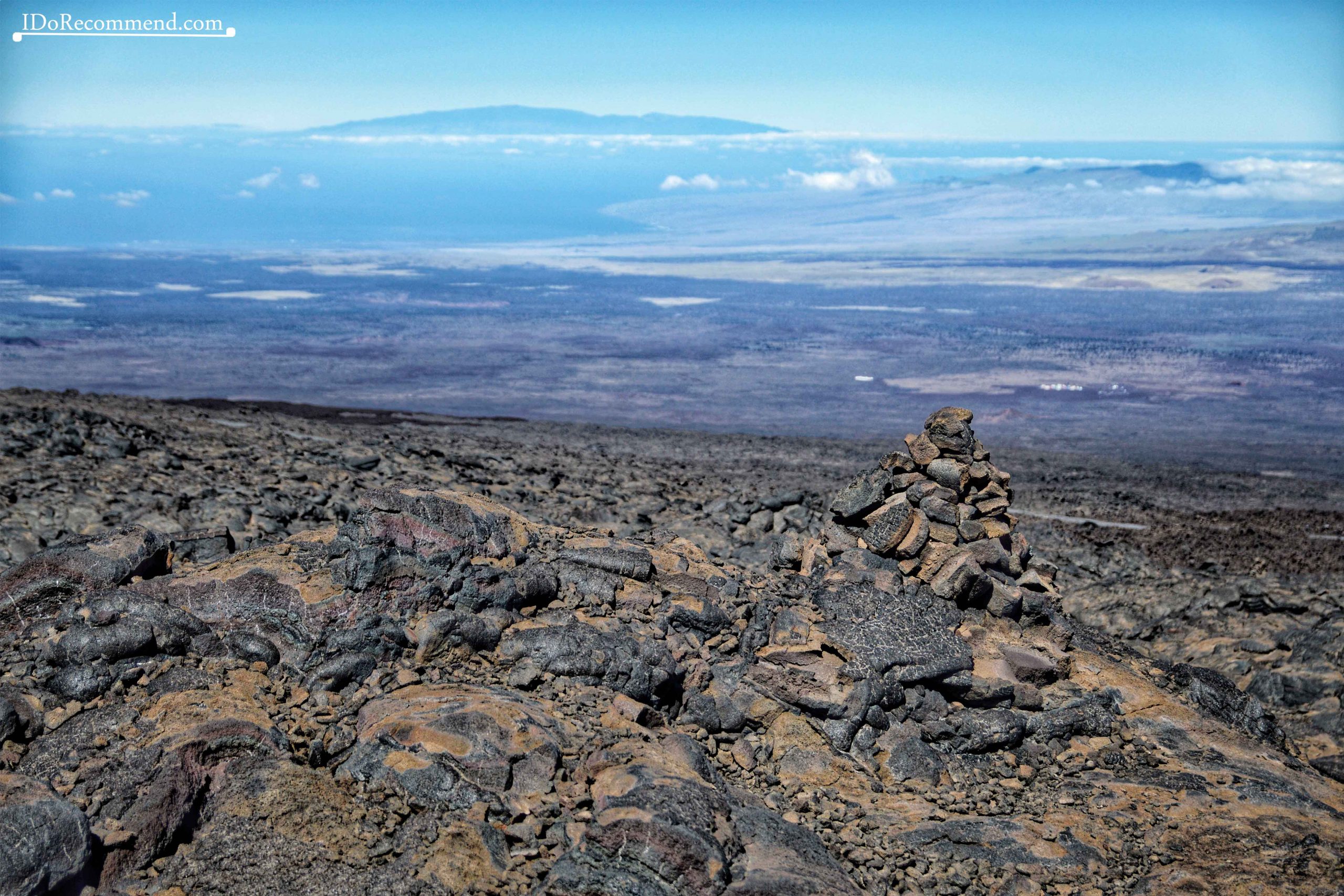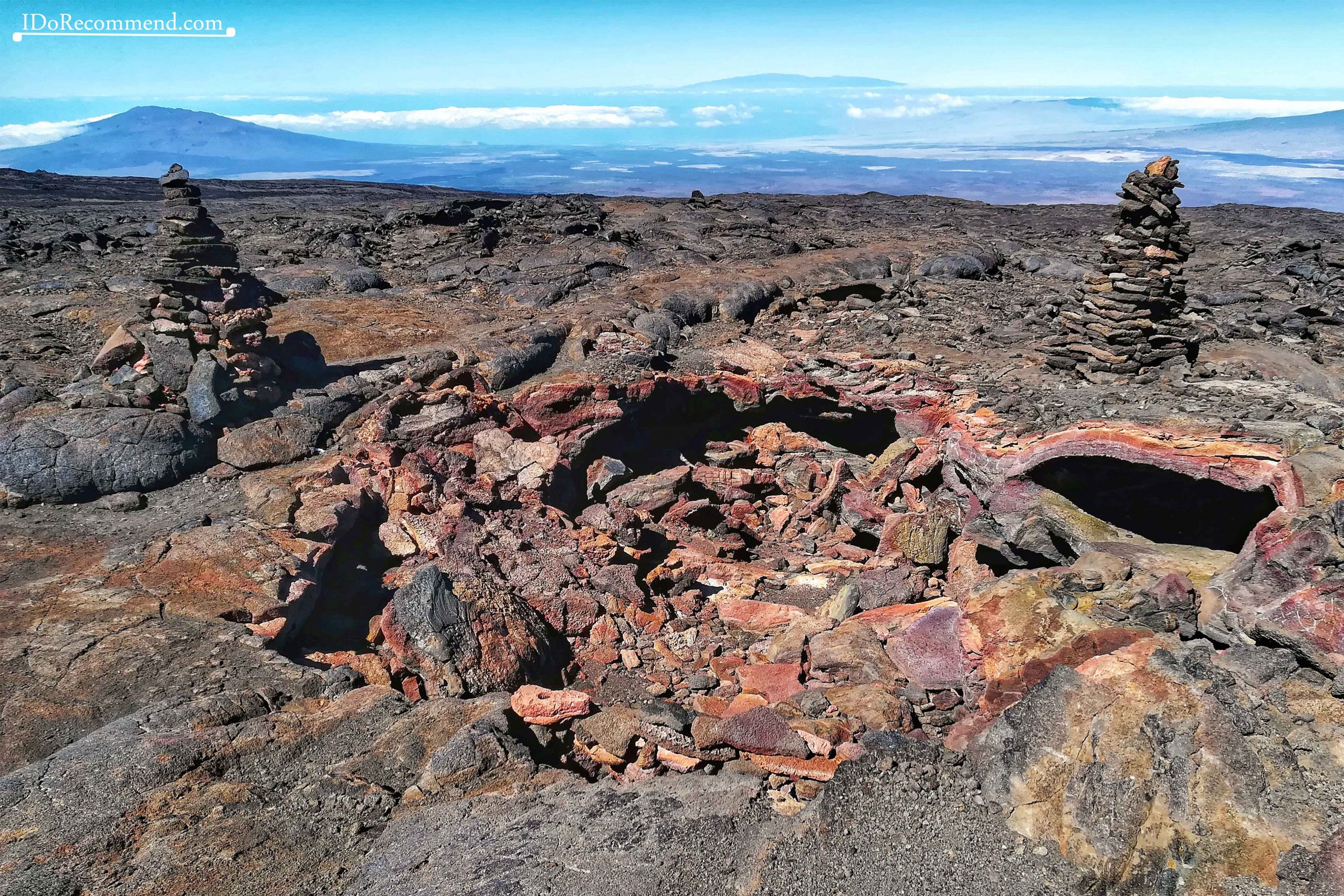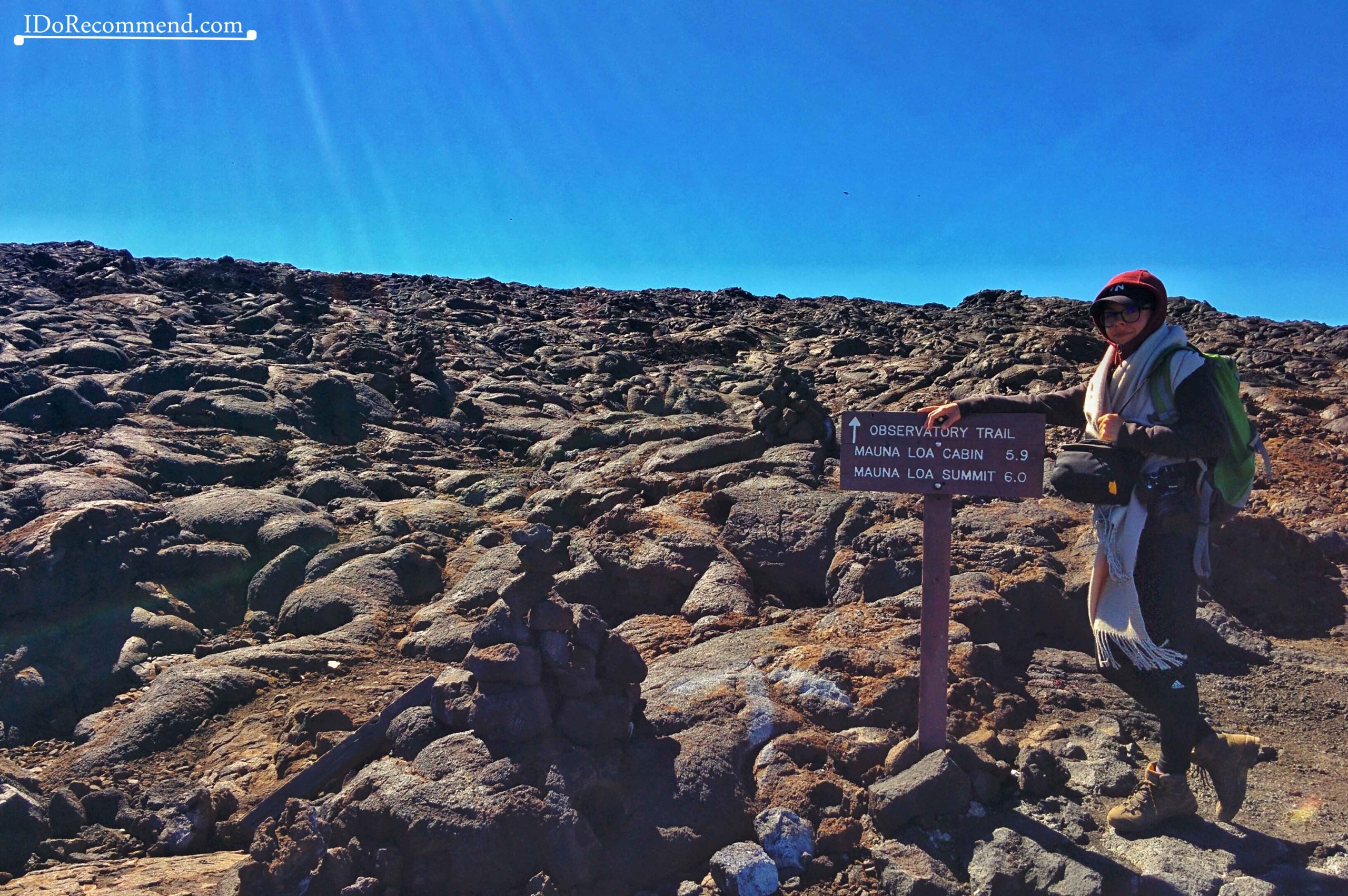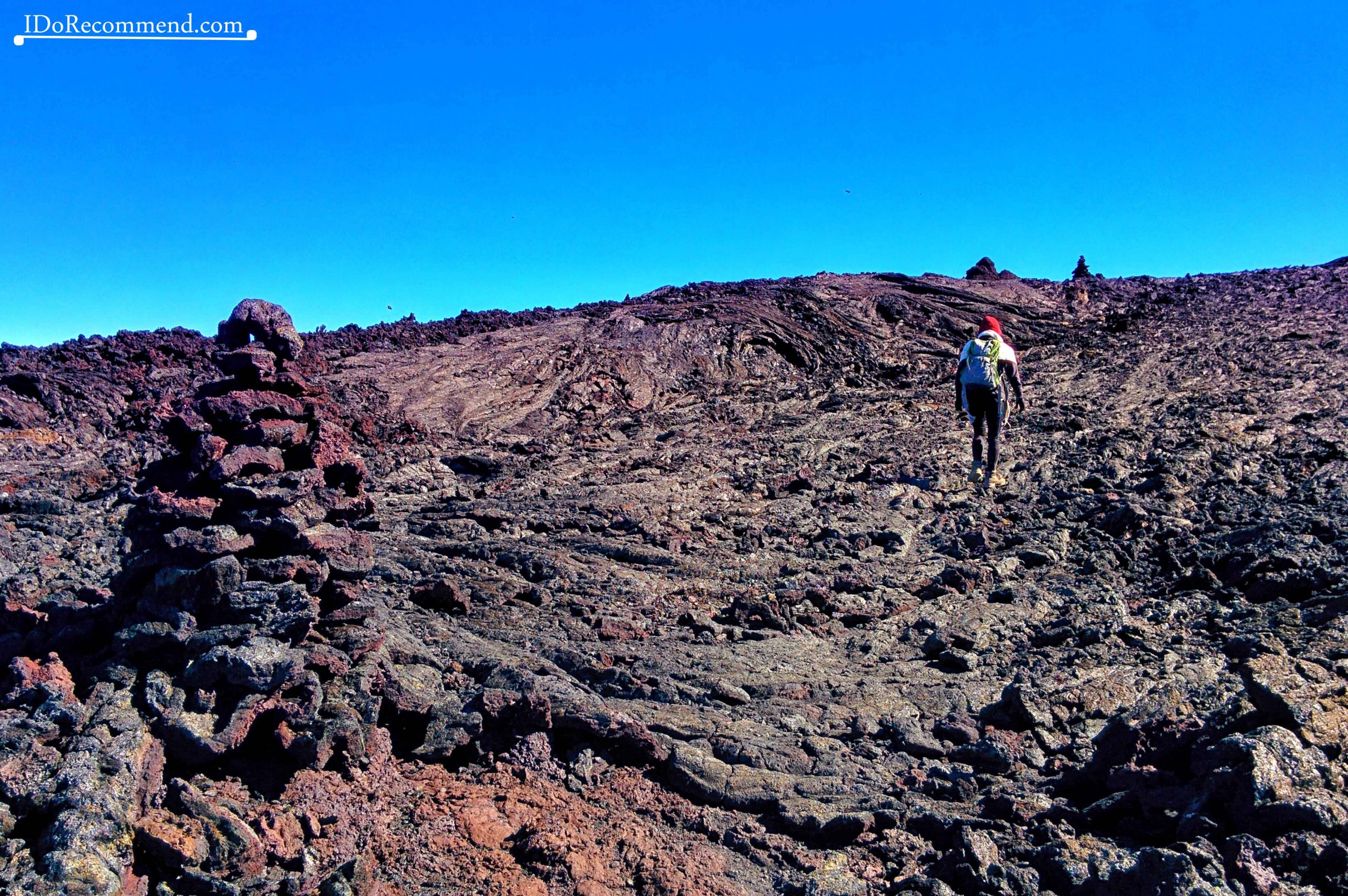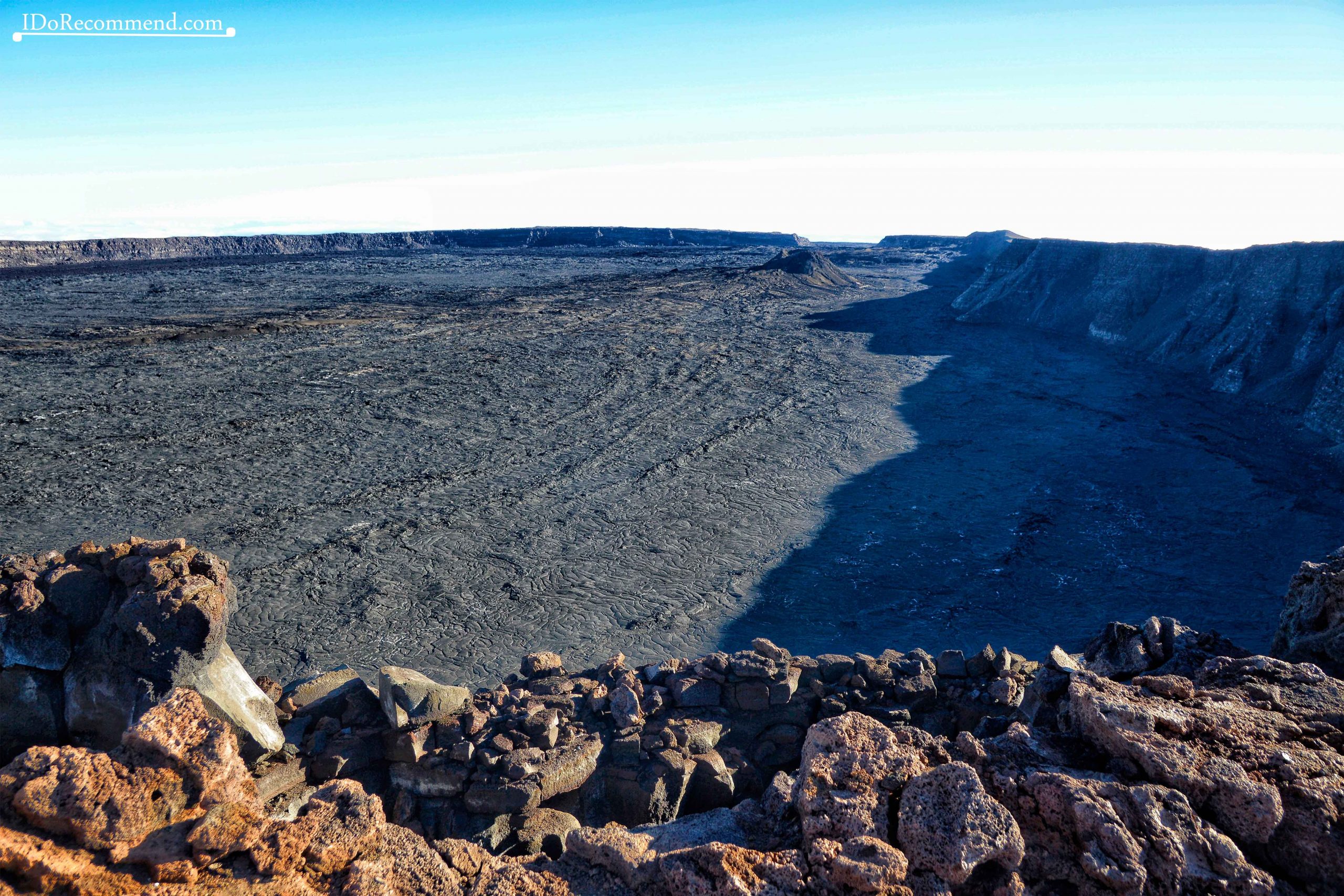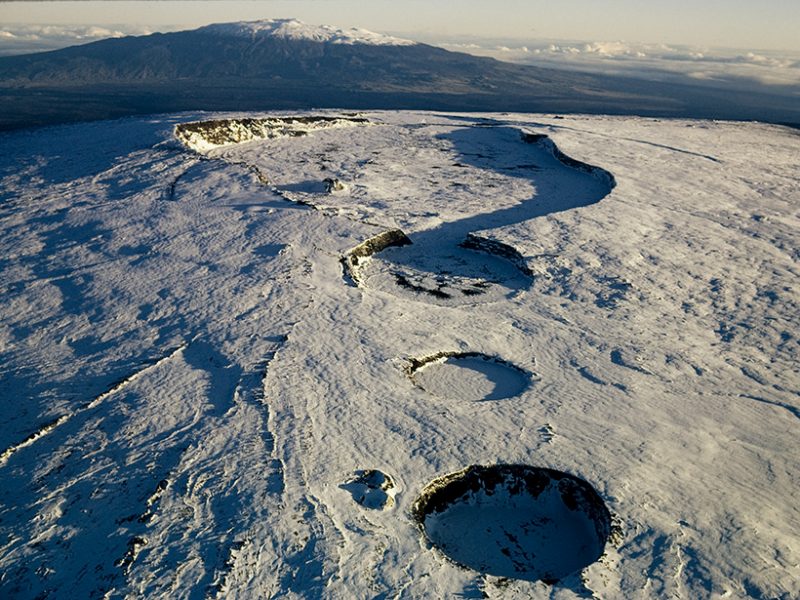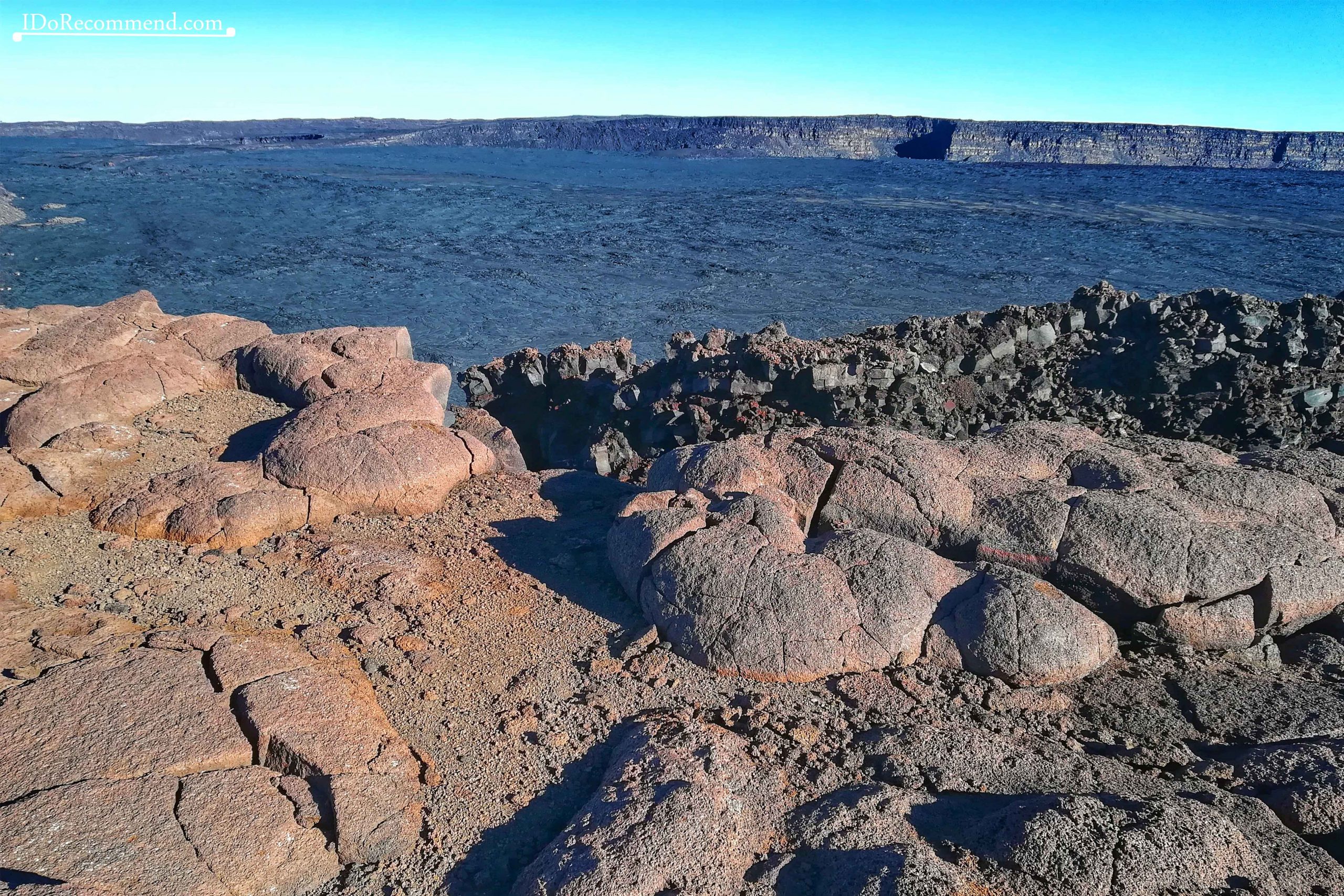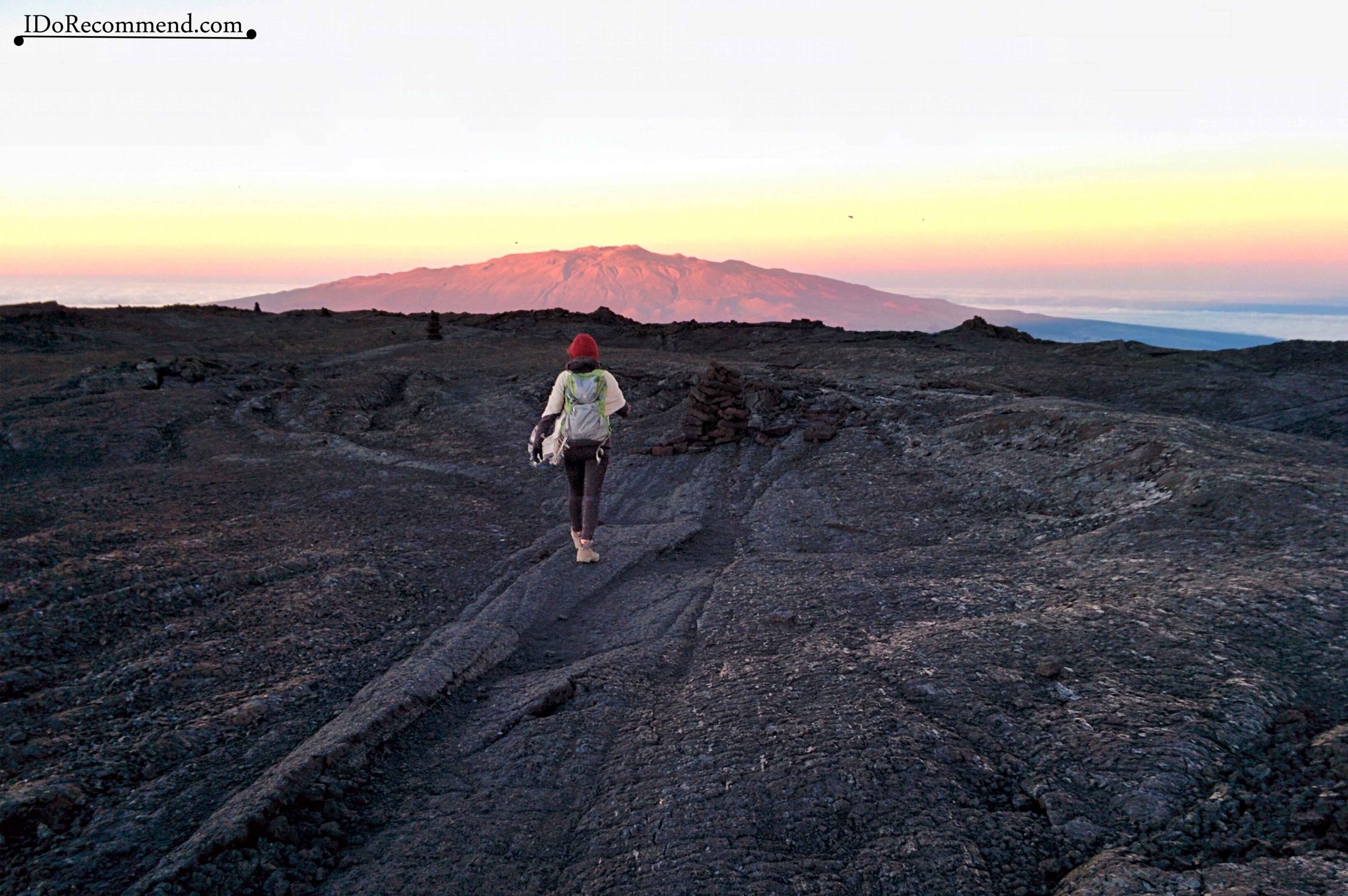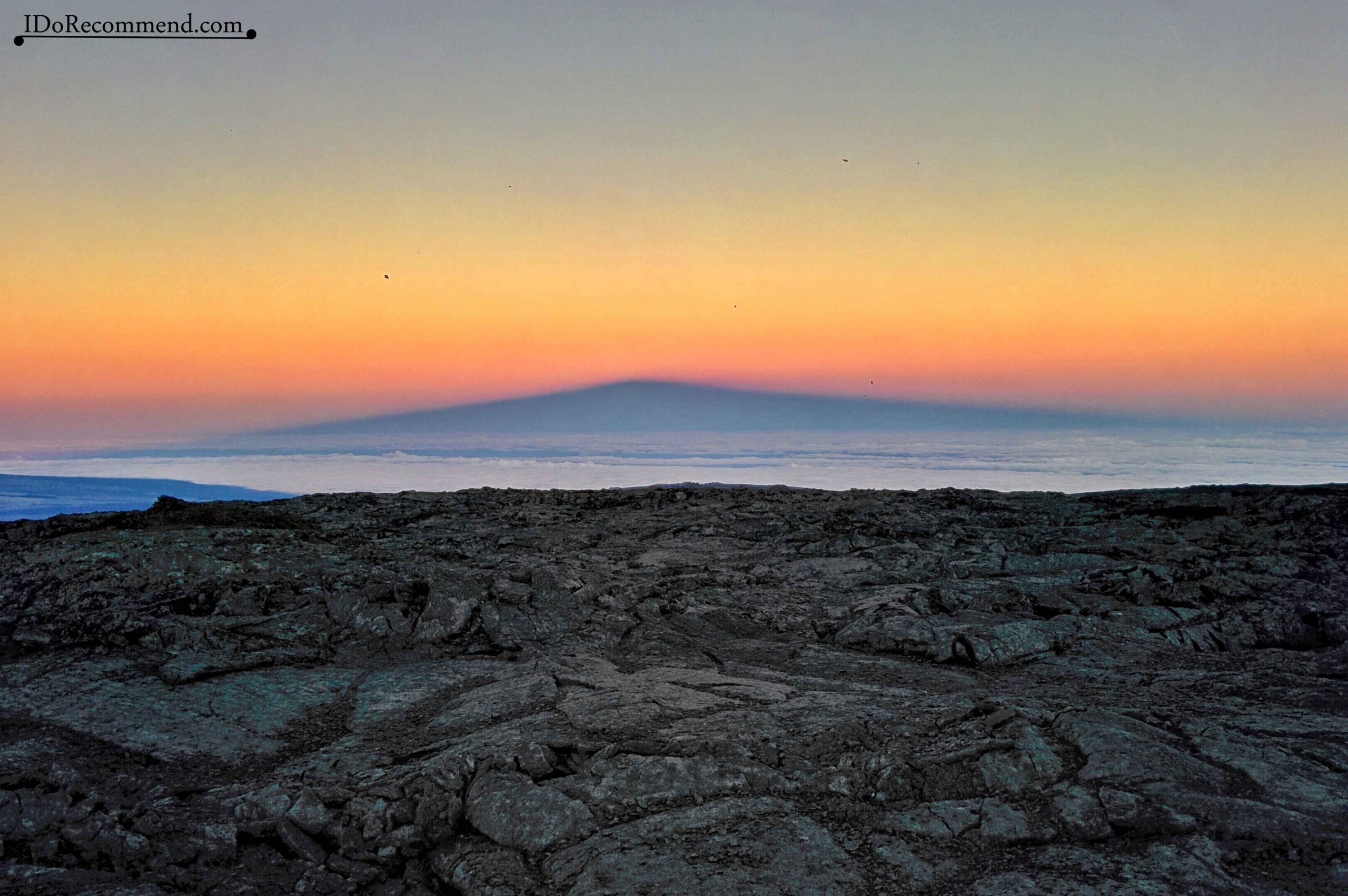This article is also available in Romanian.
Aloha!
Mauna Loa (4,168m / 13,677ft, “long mountain“) is the largest volcano in the world due to its volume and the surface it covers, 5,100 km2 (1,900 mi2). This active volcano is part of Hawai’i Volcanoes National Park and last erupted in 1984. Its shape (very broad base and very steep slopes) frame it in the category of shield volcanoes, having fluid, low viscosity lava, which erupts in quietly, but spreading over a much larger surface. This is also the reason why the entire area is covered by petrified lava and basaltic debris of brown-reddish color.
From the main road (Saddle Rd.) we had to travel 28km / 18 miles by car on a secondary road to the Mauna Loa Observatory, an atmospheric environmental research center. The one-lane road, which was very well maintained, introduced us gradually to another world, wild and dramatic, preparing us for the meeting with the volcano. I remember that road seemed endless and I was constantly looking for a volcano with a steep profile on the horizon. I didn’t find this because, as mentioned above, Mauna Loa is a shield volcano that covers about half of the entire Big Island surface.
- Mauna Loa Observatory Road
As soon as we arrived at the Mauna Loa Observatory (3,394 m / 11,135ft), we were equipped with the warmest clothes we had. We took enough food and water in our backpack and started on the trail (Mauna Loa Summit Trail). It didn’t take long for us to get acclimated, which was felt along the way. Like Mauna Kea, the route is not very technical, but the high altitude took its toll on us and we soon started to get some headaches and feel the fatigue faster. We stopped almost every half hour for rest and hydration. On the other hand, it is wonderful to see that you are higher than the layer of clouds.
- Taking a break while hiking
- Above the clouds
I had never seen such a desert landscape, without a trace of vegetation, without any sign of life. Wherever you looked you could see rugged terrain made up of ash and petrified, amorphous and glassy lava. At first glance, everything seemed annoying and sad, but if you were to look carefully, you were fascinated by the strange shapes that the lava had and its iridescent character. Those fields are a place of preparation for astronauts before future missions to the Moon or Mars. The scenery really makes you feel like you’ve stepped onto another planet.
- Volcanic rock filled with crystals in blue hues
- Petrified rugged lava
From place to place you could see underground tubes, sometimes collapsed, where lava flowed during volcanic eruptions. When you walked over them you had the impression that you were walking on a piece of glass that could break at any moment. Near Hilo there is a cave, Kaumana Cave, where you can visit 2km / 1.24miles of tunnel created after the 1881 eruption of Mauna Loa.
- Lava tubes
We spent the whole day on the mountain because the round trip was about 20km / 12.42miles long. We didn’t reach Mauna Loa Cabin because we didn’t have enough time. On the route we only met two hikers who were on the descent portion. We were guided all the time after the mounds of stones that marked the route and we were careful at every step because the rocks were uneven and jagged.
- Mauna Loa Observatory Trasil
- Rock piles (cairns) marking the trail
Once we reached the volcanic caldera, I was amazed by its size, 6km / 3.7miles long and 2.5km / 15.5miles wide. Inside it was a volcanic cone that we later found out was formed after the eruptions of the 1940s. I quickly took some pictures because I was in a hurry and it was getting cold quickly outside (maximum 7°C / 44°F).
- Mauna Loa Moku‘āweoweo Caldera and a cone visible in the distant right side of the image
- Aerial view of Mauna Loa covered in snow (summit caldera and pit crater in the foreground) ©eos.org
After the monitoring of the last years, it seems that the mountain is constantly expanding. The instruments located between the walls of the caldera show that it expands, the reason being the inner accumulation of magma. This explains the fact that during the hike I saw steam coming out of the cracks of the caldera. At that moment we panicked a little and rushed to move away from that area as quickly as possible. But moving fast was difficult because of the rugged terrain.
- Mauna Loa Caldera
Close to sunset, we still had a long way back to the return point. The darkness was soon to take over the whole land, and the markings (the mounds of stones) were becoming quite difficult to spot because they were not very frequent and they were black. The temperature was getting lower and the wind was getting stronger. In the distance, from the layer of clouds came the volcano Mauna Kea that we visited 2 days ago, and the sky was getting reddish hues. We arrived at the car after 8pm when it was already dark, but the sunset at over 3,000m / 1864miles altitude and the sky full of stars were the rewards of that long but unique journey.
- Mauna Kea volcano is on the skyline in the distance
- Sunset on Mauna Loa
Mahalo!
Follow the #IDRTravel posts to discover many other beautiful places on earth.
Bless up,
Bianca

